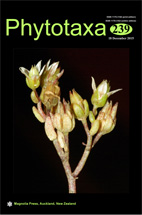Abstract
The infrageneric taxonomy and evolution of Ranunculus are still not well understood. In this regard, we investigated the origin and genetic diversity of the Iberian endemic plant Ranunculus bupleuroides s.l. by analysis of nuclear internal transcribed spacers (ITS) and plastid (rpl32-trnL, rps16-trnQ, trnK-matK, ycf6-psbM) sequence data. Phylogenetic analysis reveals two geographically well supported subclades: one formed by high mountain plants and another by more typical samples of Ranunculus bupleuroides from the lowlands of the western Iberian Peninsula. The subclade of montane plants includes both plants originating in Gredos and Béjar (Ranunculus cherubicus subsp. cherubicus) and those from Sierra Nevada (R. cherubicus subsp. girelai). In the light of the new molecular results obtained, combined with an assessment of morphological, geographical and ecological characters, a new systematic treatment is proposed.

